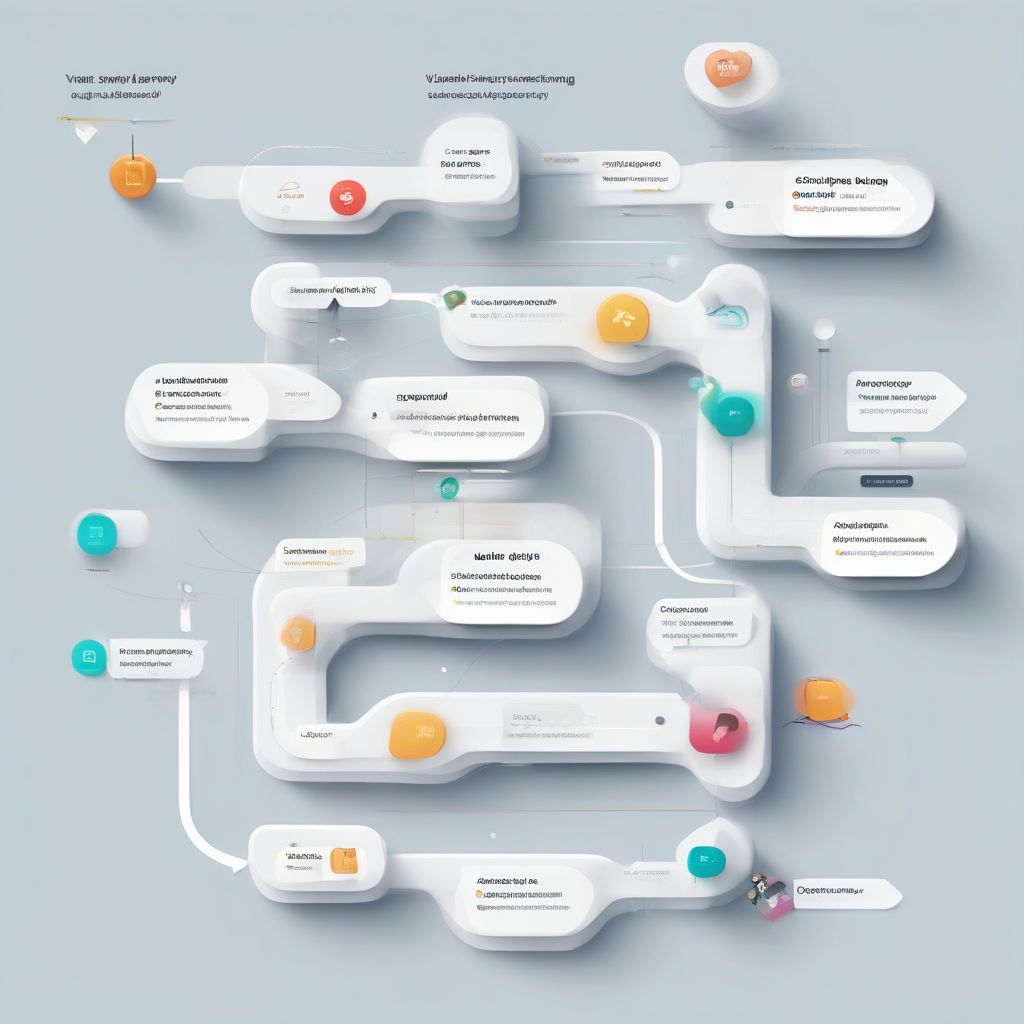Have you ever downloaded an app with high hopes, only to find yourself lost and frustrated within minutes? We’ve all been there. A clunky, confusing app experience can be a death knell, leading to uninstalls and negative reviews. On the other hand, a well-designed user journey can turn casual users into loyal fans.
As a nutritionist and meal-planning coach, I understand the importance of a smooth and enjoyable experience. Just like following a well-structured meal plan leads to better health outcomes, a seamless app journey leads to happy, engaged users.
This article delves into the how-to of designing seamless user journeys in apps. We’ll explore the key principles, best practices, and practical tips to help you create an app experience that keeps users coming back for more.
Understanding the User Journey
Before we jump into the design aspect, let’s clarify what we mean by “user journey.” Simply put, it’s the path a user takes within your app to achieve a specific goal. This could be anything from signing up and creating an account to completing a purchase or booking an appointment.
A user journey is typically composed of several stages:
- Awareness: The user becomes aware of your app and its potential value.
- Consideration: The user explores your app’s features and benefits.
- Decision/Action: The user decides to download and use your app.
- Engagement: The user actively interacts with your app’s features.
- Retention: The user finds value in your app and continues to use it over time.
Designing a seamless user journey means optimizing each of these stages to ensure a smooth, intuitive, and enjoyable experience for your users.
Key Principles of Seamless User Journey Design
1. Empathy-Driven Design: Walk in Your Users’ Shoes
The foundation of any successful user journey is a deep understanding of your target audience. Before you start sketching wireframes or writing code, you need to empathize with your users and understand their needs, goals, frustrations, and motivations.
- Conduct User Research: Use surveys, interviews, and user testing to gather valuable insights into your target audience’s behavior, preferences, and pain points.
- Create User Personas: Develop fictional representations of your ideal users based on your research. This will help you visualize your target audience and design with their needs in mind.
2. Clarity and Simplicity: Keep it Clean and Intuitive
In the realm of app design, simplicity reigns supreme. Users should be able to navigate your app intuitively without needing a user manual.
- Prioritize Essential Features: Don’t overwhelm users with unnecessary bells and whistles. Focus on the core features that deliver the most value.
- Use Clear and Concise Language: Avoid technical jargon and industry-specific terms. Use language that is easy for everyone to understand.
- Provide Helpful Onboarding: Guide new users through the essential features of your app with a clear and concise onboarding experience.
3. Visual Hierarchy and Consistency: Guide the Eye and Build Familiarity
A visually appealing and consistent design plays a crucial role in creating a seamless user journey.
- Establish a Clear Visual Hierarchy: Use size, color, and contrast to guide users’ attention to the most important elements on each screen.
- Maintain Consistency: Use consistent design elements, such as buttons, icons, and typography, throughout your app to create a sense of familiarity and predictability.
4. Feedback and Error Prevention: Keep Users Informed and Empowered
Users should always feel in control and informed when interacting with your app.
- Provide Clear Feedback: Let users know when an action has been completed, such as submitting a form or making a purchase.
- Offer Helpful Error Messages: If an error occurs, provide clear and informative error messages that explain the problem and suggest solutions.
- Anticipate User Needs: Proactively guide users and prevent potential errors by anticipating their needs and providing relevant information at the right time.
 Seamless App Journey Design
Seamless App Journey Design
Practical Tips for Designing Seamless User Journeys
1. Map Out User Flows: Visualize the Journey
Create visual representations of the different paths users can take within your app. This will help you identify potential bottlenecks or areas for improvement.
2. Use Prototyping Tools: Test and Iterate
Before investing in full-scale development, use prototyping tools to create interactive mockups of your app. This allows you to test your design and make necessary adjustments early in the development process.
3. Conduct User Testing: Gather Real-World Feedback
Recruit representative users to test your app and provide feedback on their experience. This is invaluable for identifying usability issues and areas for improvement.
4. Embrace Iteration: Continuously Improve
The design process is never truly finished. Continuously collect user feedback, analyze app usage data, and make ongoing improvements to enhance the user experience over time.
Conclusion
Designing seamless user journeys in apps is an ongoing process that requires empathy, clarity, and a commitment to continuous improvement. By understanding your users, prioritizing simplicity, and following the best practices outlined in this article, you can create an app experience that delights your users and keeps them coming back for more. Remember, a well-designed user journey is an investment in the long-term success of your app.
What steps are you taking to improve the user journey in your app? Share your thoughts and experiences in the comments below!
[amazon bestseller=”app design”]
